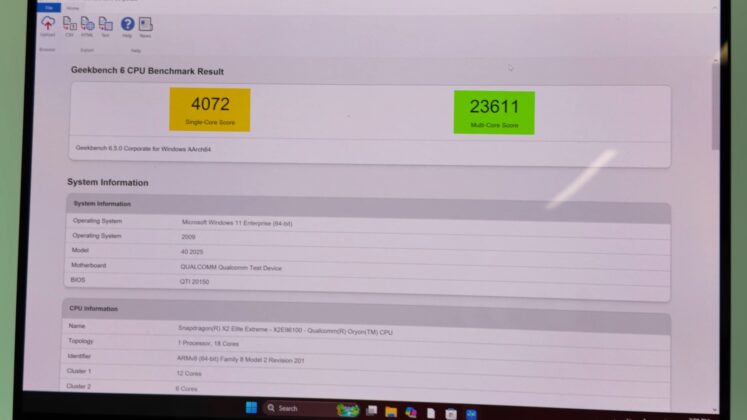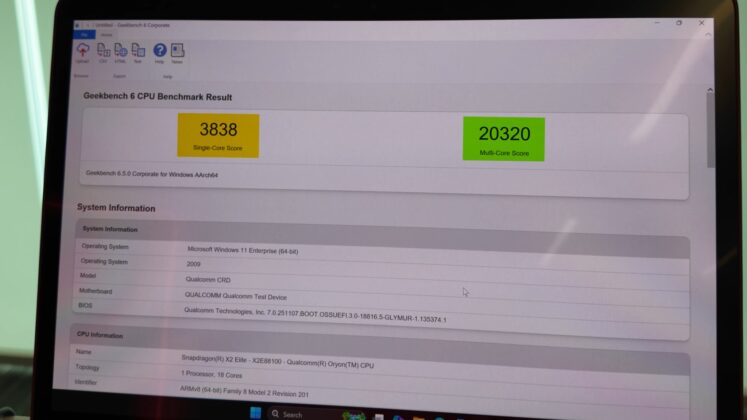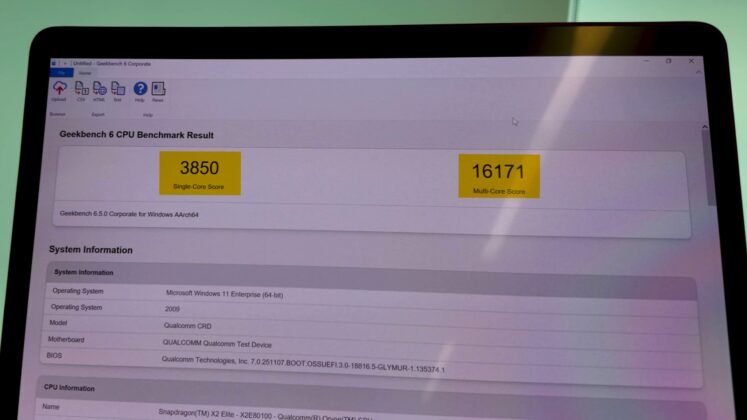The IoT Coffee Talk meet up in Vegas for CES 2026, and share their insights from Day 1
Download audio: https://dts.podtrac.com/redirect.mp3/api.spreaker.com/download/episode/69349065/dotnetrocks_1984_uno_and_dot_net_10.mp3
Building an AI application might sound like a task for skilled developers secluded in rooms full of monitors, tapping into the arcane lore of deep learning and cloud computation. However, with tools like Microsoft Copilot Studio, the reality is far more accessible and collaborative. Today, let’s walk through the creation of an AI agent that serves as an IT support assistant. By the end of this post, you’ll see that constructing an efficient AI agent is less about arcane knowledge and more about thoughtful, systematic integration of accessible technology.
Let’s start by setting the scene. Imagine you’re part of an IT department inundated with the same questions day in and day out: “How do I reset my VPN?” or “What to do when my email stops syncing?” Automation through an AI agent can relieve your team of this repetitive burden, allowing them to focus on more complex issues.
This video is from Anders Jensen.
Firstly, navigate to CopilotStudio.microsoft.com and initiate a new AI agent. We’ll name ours “IT Support Agent” and give it an icon for easy identification among other agents you may create in the future. The primary function of this AI agent will be to assist users with common IT requests and issues by leveraging internal knowledge sources rather than scouring the internet.
The next crucial step is to select the appropriate model for our agent. While experimental models tempt with cutting-edge features, they lack stability, which is critical for our purposes. Opting for a robust, production-ready model like DBT5 chat ensures reliability.
To provide our AI the necessary information, we’ll integrate a knowledge base; in this case, a 20-page IT service document stored on OneDrive. This ensures that any updates to the document automatically refresh the agent’s responses, keeping the support relevant and accurate without manual intervention.
However, merely having the knowledge isn’t enough. The agent must also refer to this internal knowledge exclusively when resolving queries, which we ensure by adjusting its settings to disable web search and general knowledge models, refining its source to our specific documentation.
As our AI navigates inquiries, it’s bound to encounter questions outside its scope. For these instances, we configure the agent to politely decline providing an answer, reinforcing its role as a dedicated IT support entity. This specificity helps maintain clarity and focus in the interactions it handles.
Moving beyond responding to queries, I integrated the capability for our AI to initiate IT support tickets when issues exceed simple answers and require direct human intervention. A user’s inquiry about resetting a Salesforce password, for example, triggers a pathway that offers to create a support ticket if the internal documentation doesn’t cover the query.
Implementing this feature involves creating ‘Topics’—specific response pathways that our AI can employ based on the given situation. Furthermore, through integration with tools like Microsoft Planner, once a user confirms the need for a ticket, the AI can automatically generate a task in a designated Planner board, ensuring the issue is queued for IT’s attention.
Think of it like this: Our AI agent isn’t just a virtual assistant lurking in the digital shadows of a network. It’s more akin to a triage nurse, equipped to address the straightforward cases and knowledgeable enough to escalate the more challenging scenarios to the right channels effectively.
Finally, embedding this agent into a real-world application involves linking it with communication platforms commonly used within organizations, like Microsoft Teams and Microsoft 365 Copilot. This integration ensures that accessing the AI’s capabilities is as seamless as sending a message to a colleague.
And there you have it. What begins as a dive into the capabilities of Copilot Studio ends up demonstrating a profound shift in how we approach workplace automation. By combining clear objectives with strategic tools, creating an AI agent becomes a manageable, even enjoyable, endeavor. The key takeaway? Empowering your IT support through AI isn’t just about technology; it’s equally about understanding and designing thoughtful interactions.
Unlock valuable insights with data analysis strategies utilizing SQL Server, Python and free libraries for machine learning.
The post Foundational Data Analysis using Python and SQL Server appeared first on MSSQLTips.com.
[1.0.0b260107] - 2026-01-07
Added
- agent-framework-devui: Improve DevUI and add Context Inspector view as a new tab under traces (#2742) by @victordibia
- samples: Add streaming sample for Azure Functions (#3057) by @gavin-aguiar
Changed
- repo: Update templates (#3106) by @eavanvalkenburg
Fixed
- agent-framework-ag-ui: Fix MCP tool result serialization for list[TextContent] (#2523) by @claude89757
- agent-framework-azure-ai: Fix response_format handling for structured outputs (#3114) by @moonbox3
Full Changelog: python-1.0.0b260106...python-1.0.0b260107
With the Snapdragon X2 Elite Extreme, Windows 11 on Arm is finally catching up with Apple’s M4 lineup, but it’s still behind Apple’s 10-core M5 in single-core performance. The most powerful Windows 11 on Arm chip is Snapdragon X2 Elite Extreme X2E-96-100, and it posted a Geekbench single-core score of 4,072 and 23,611 in multi-core.
These results are impressive, and Snapdragon X2 Elite Extreme is not the only CPU in the “X2” lineup. Windows Latest previously obtained benchmarks for a reference design (not an actual device) running Snapdragon X2 Elite, and it posted a score of 3,849 in single-core and up to 16,222 in multi-core.
Before I talk about the numbers for the SKUs, let’s take a look at Elite and Elite Extreme SKUs in the Snapdragon X2 series:
| SKU | Cores | Max / Base CPU clock | TDP | Memory | NPU |
|---|---|---|---|---|---|
| X2E-80-100 | 12 | Up to 4.7 GHz / 3.4 GHz | 55W | LPDDR5X | 80 TOPS |
| X2E-84-100 | 12 | Up to 4.7 GHz / 3.4 GHz | 70W | LPDDR5X | 80 TOPS |
| X2E-88-100 | 18 | Up to 4.7 GHz / 3.4 GHz | 55W | LPDDR5X | 80 TOPS |
| X2E-90-100 | 18 | Up to 4.7 GHz / 3.4 GHz | 70W | LPDDR5X | 80 TOPS |
| X2E-96-100 (Elite Extreme) | 18 | Up to 5.0 GHz / 3.6 GHz | 82W | LPDDR5X | 80 TOPS |
There’s also a Snapdragon X2 Plus SKU that I have not included in the table because we don’t have details of the chip. Plus is particularly for low-end hardware, so it’s not going to be better than any of these “X2E” chips listed above. It doesn’t deserve our attention for now, as we’re looking at the best-performing Windows on Arm CPUs.
YouTuber Alex Ziskind, who had early access to Snapdragon chips, shared Geekbench screenshots of the reference units running X2 Elite “Extreme.” Here are all the screenshots of Geekbench for the Snapdragon X2 lineup:
I used these numbers and compared them against the existing Apple M chips.
How powerful are the Snapdragon X2 Elite and Extreme chips compared to the Apple M3 and Apple M4 variants?
X2E-80-100
According to internal Geekbench tests (not available on the Geekbench website yet), Snapdragon X2 Elite’s 12-core X2E-80-100 chip, which is the base variant in the Elite lineup, gives us a score of 3850 in single-core and 16,171 in multi-core.
X2E-80-100 already sits well above Apple M3, which is about 2,997 in single-core and 11,464 multi-core. This chip also edges past M3 Pro on multi-core (M3 Pro is typically around the mid-15K range).
Against Apple’s base M4, it’s basically in the same single-core class (3.7K to 3.8K), and it can even come out slightly ahead on multi-core because it has more cores to throw at the workload.
X2E-88-100
Next up, we’ve Snapdragon X2 Elite X2E-88-100, which has 18 cores, and it fetches up to 3,838 score in single-core. This is more or less at the same level as the 12-core variant, but it meaningfully raises multi-core to 20,320. For comparison, Apple M3 Max is typically in the low 21K multi-core tests.
X2E-88-100 is a bit below M4 Pro multi-core (typically low-23K). Single-core is still close to base M4, but usually behind M4 Pr or M4 Max.
X2E-96-100 “Elite Extreme” is the most powerful Arm processor for Windows 11
But the beast processor is the Snapdragon X2 X2E-96-100 “Elite Extreme.” This has 4,072 points in single-score and a whopping 23,611 in multi-core. On single-core, it’s effectively in M4 Max territory, which is usually 4.07K.
On multi-core, Snapdragon X2 Elite Extreme is slightly ahead of what you usually see for M4 Pro (we spotted multiple listings showing M4 Pro at 23K for multi-core).
However, Elite Extreme is still behind M4 Max, which can go above 26,000 points in multi-core tests.
Here’s a table comparing Snapdragon X2 X2E-80-100, X2E-88-100, and X2E-96-100 (Elite Extreme) with Apple M lineup:
| Chip / Variant source: WindowsLatest.com |
Cores | Geekbench 6.5 Single-core | Geekbench 6.5 Multi-core |
|---|---|---|---|
| X2E-80-100 | 12 | 3,850 | 16,171 |
| X2E-88-100 | 18 | 3,838 | 20,320 |
| X2E-96-100 (Elite Extreme) | 18 | 4,072 | 23,611 |
| Apple M3 | Base | 2,997 (2,976–3093) | 11,464 (10,655–12,031) |
| Apple M3 Pro | 12 | 3,136 (3,078–3146) | 15,422 (14,691–15,877) |
| Apple M3 Max | 16 | 3,134 (3,031–3175) | 21,220 (21,083–21,409) |
| Apple M4 | 10 | 3,783 (3,715–3913) | 15,426 (15,172–15,564) |
| Apple M4 Pro | 14 | 3,918 (3,870–3976) | 23,081 (22,696–23,164) |
| Apple M4 Max | 16 | 4,070 (4,025–4102) | 26,814 (26,610–26,873) |
| Apple M5 | 10 | 4,351 (4,298–4367) | 18,053 (17,795–18,126) |
Snapdragon X2 is clearly a strong platform, and now the ball is in Microsoft’s court. The company needs to meaningfully improve Windows 11 if it wants to compete with Apple.
The post Windows 11 finally has a MacBook killer chip, Snapdragon X2 Elite Extreme just posted monster scores on Geekbench appeared first on Windows Latest



